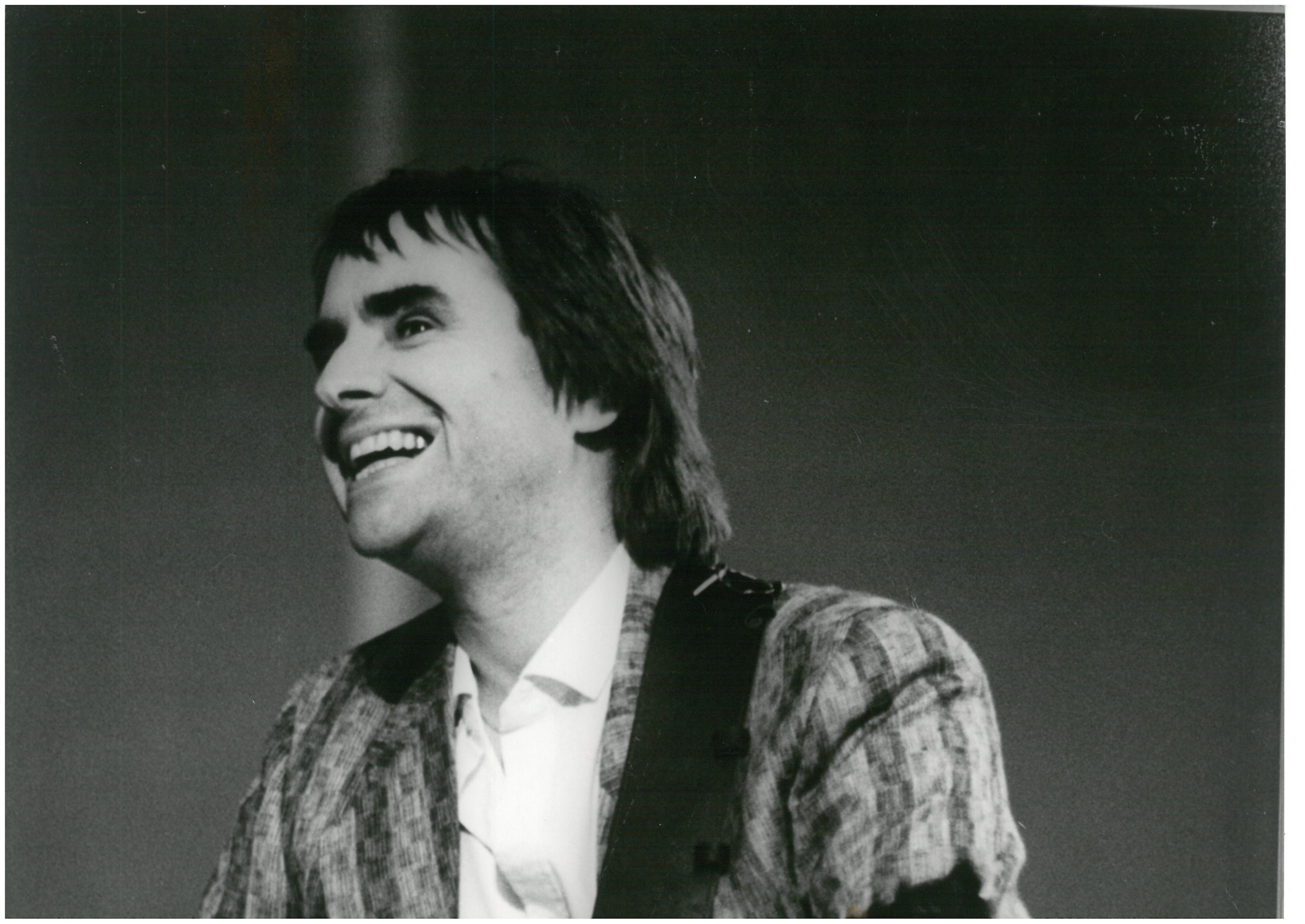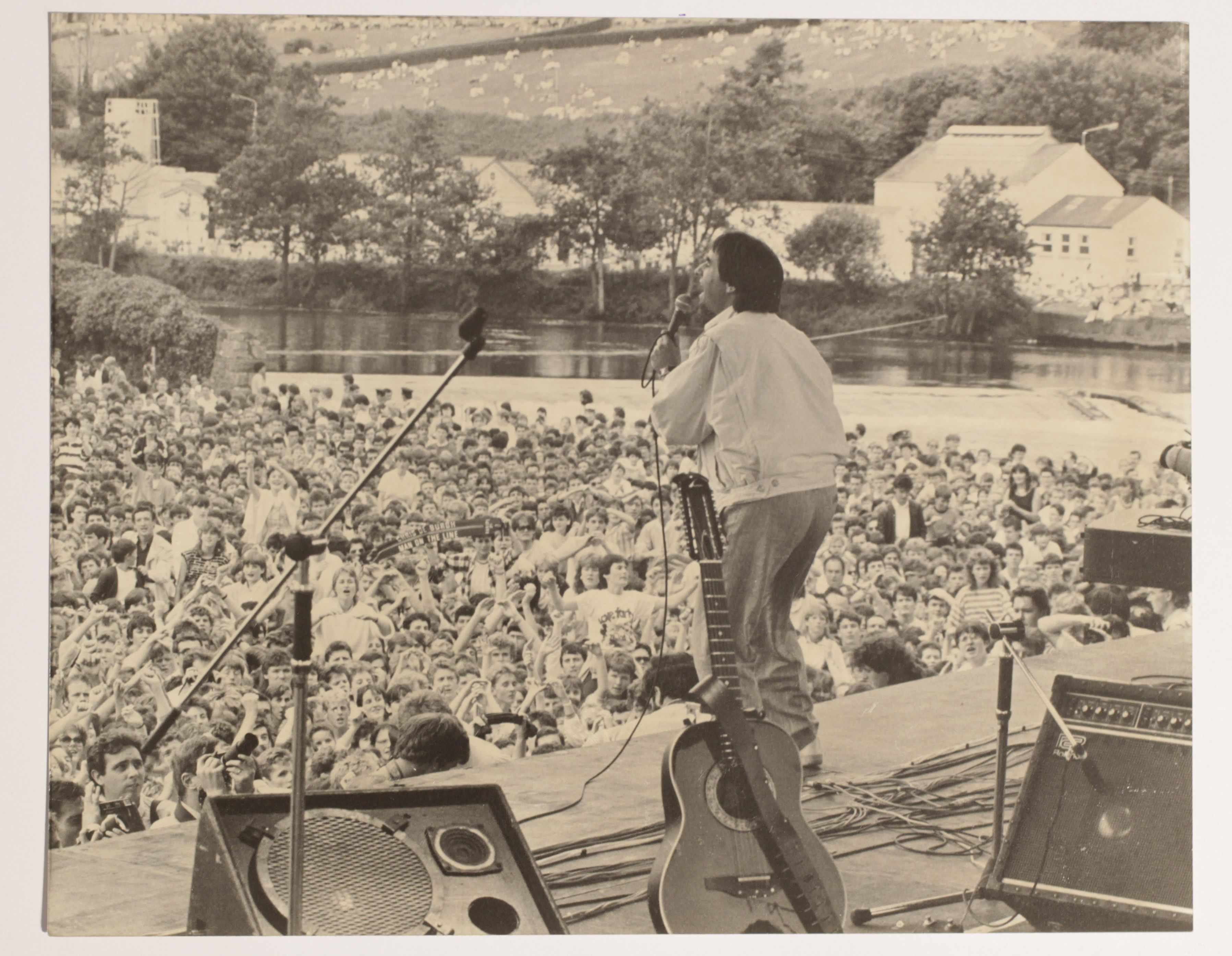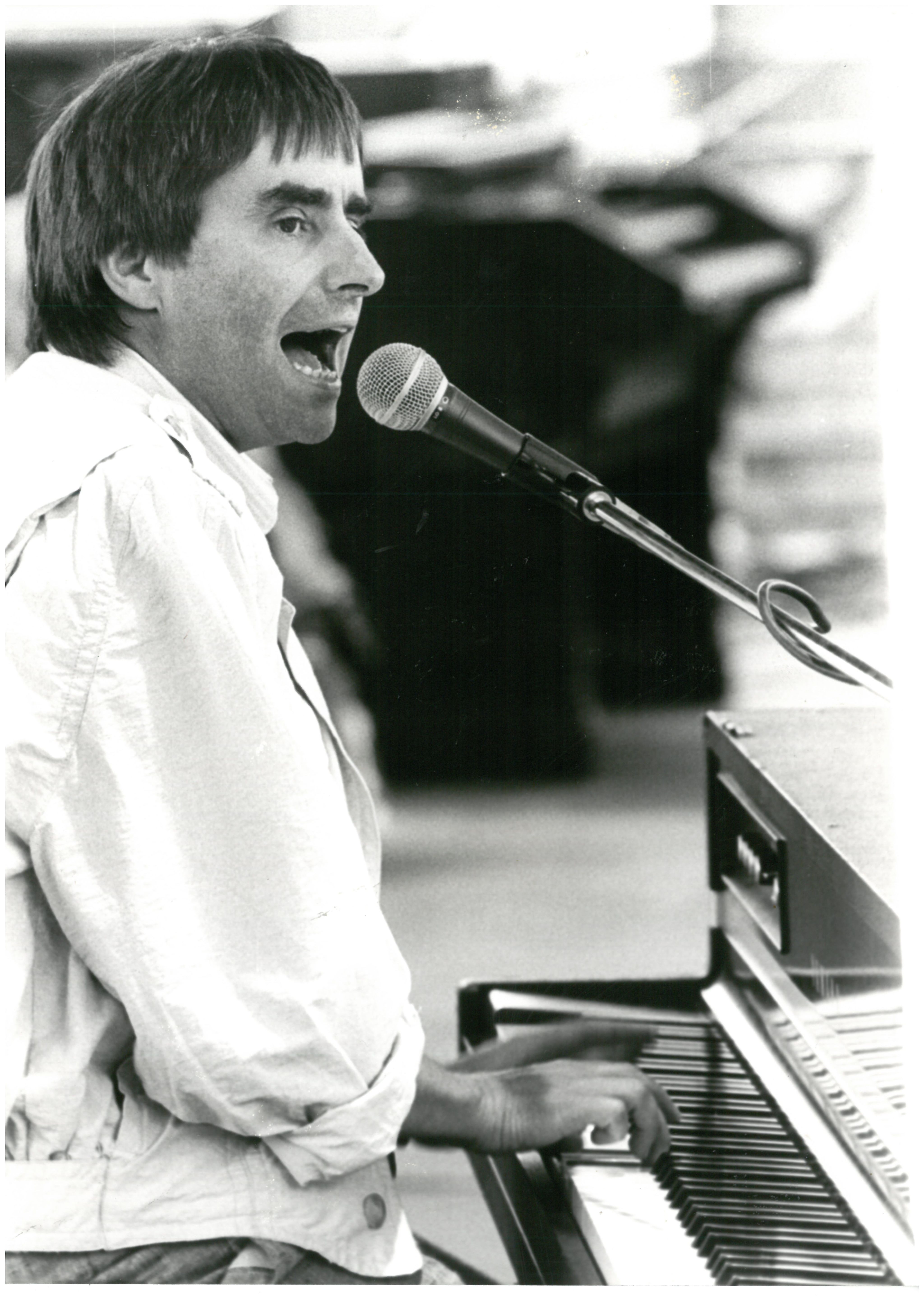The Lady in Red
By Chris de Burgh

Chris de Burgh emerged as a songwriter of significance in the early 1970s. He was a singer-songwriter in the chivalrous troubadour mode, telling stories with carefully constructed, sometimes heavily symbolic narratives and an element of mystery. There was always a strongly romantic aspect to his work and his audience was hugely female-biased as a result. His biggest hit has been described as the most unashamedly romantic song by an Irish writer. ‘The Lady In Red’ is said to be about his wife Diane. When married to a contagious melody and a smooth arrangement, it became a global smash hit: the ultimate icing on de Burgh’s extraordinarily successful global pop career.
The Story Behind The Song
Chris Davidson aka Chris de Burgh was born in Buenos Aires in Argentina in 1947. He grew up in Ireland and throughout his career has always insisted on being recognised as an Irishman. The family moved to Wexford, in the south-east of Ireland, and he grew up in Bargy Castle. Chris studied languages at Trinity College Dublin, but spent much of his downtime at home playing the piano, singing with his acoustic guitar and learning his trade as a songwriter. He played in Captain America’s on Grafton Street, Dublin, to earn drinking money and to hone his skills.
Obviously, this was time put to good use, as he scored a record deal with A&M Records, the first company in England that he talked to, and in 1974 the release of his debut LP set him on the road to international fame and fortune. He’s photographed on the sleeve of the album, Far Beyond These Castle Walls, strolling up the tree-lined avenue of Bargy Castle in County Wexford, with the ancient building looking resplendent in the background. Indeed, in a rare case of riches to riches, his current opulent home in the leafy surroundings of the Wicklow Mountains in Ireland went on the market in 2021 for a cool €12 million!
De Burgh achieved chart success with his singles ‘Don’t Pay The Ferryman’ and ‘High On Emotion’ and his albums The Getaway, Man On The Line and Spanish Train and Other Stories, were all successful in their own right. But while they established de Burgh as an accomplished songwriter with a voice to match his mostly romantic ballads, these albums were simply preparing the ground for the bigger successes that were to come. And they came.

Chris de Burgh: grew up in Bargy Castle, Co. Wexford
Chris de Burgh: grew up in Bargy Castle, Co. Wexford
While most love songs, even popular ones, can be vaguely, or even actually anonymous, there are others where the subject is either named or can be gleaned with a little sleuthing. So songs about close family members, partners and muses are not uncommon.
The Irish musician Philip Lynott of Thin Lizzy wrote several such songs, including two called ‘Sarah’ – one for his grandmother and one for his daughter; ‘Cathleen’ about his other daughter; and ‘Philomena’ for his mother. Indeed, the same Philomena in her book My Boy, says that – in her son’s song ‘Look What The Wind Blew In’ – the lines “then somewhere from the North, this gale I knew just flew in” refers to a girlfriend of his, Gale Claydon.
The former model Patti Boyd was eulogised in ‘Something’ by George Harrison, and also in both ‘Layla’ and ‘Wonderful Tonight’, by Eric Clapton. Van Morrison’s ‘Crazy Love’ is said to have been inspired by his then girlfriend Janet Rigsbee, while Tom Waits’ ‘Jersey Girl’ was for Irishwoman Kathleen Brennan, who became his wife, mentor, artistic collaborator and manager. So while many women would inevitably imagine themselves into the song, the question remained: about whom had Chris de Burgh’s biggest hit been written?
In the Summer of 1986, he released the album Into The Light. The track ‘The Lady In Red’ was released as the second single. The public took to it practically instantly and it climbed quickly all the way to the top of the charts in the UK. The album that spawned it settled for the No.2 spot, and made the Top 10 in at least a dozen more territories (including the USA, Australia, Norway and South Africa).
The single, meanwhile, went to No.1 in at least 10 countries (including the UK, Ireland and Canada) and to No.3 in the US Billboard charts. It became virtually impossible to avoid on radio, while also being widely and consistently heard in the marketplaces of holiday destinations such as Majorca, Malaga, Nice, Istanbul and elsewhere. It established Chris de Burgh as an international superstar, repeatedly chalking up huge sell-out tours that took him to virtually every major stadium in the world.
You can’t have that kind of success without the relentless publicity drive that goes with it, and it soon came to light via an inquisitive media that the hit was written about his wife Diane. Chris volunteered that it had started with him trying to capture the memory of his first sighting of her. He admitted that he began writing the song after he and his wife had an argument. Having found it hard to finish, he also had a problem finding an original title. He thought of ‘The Way You Look Tonight’ but that was dumped after he realised that it had already been used. Some months passed, before he saw Diane in a nightclub wearing a red dress, and the rest became pop music history.
While the song was a huge hit and has become a standard at weddings and similar gatherings, it divided music fans, with those who like their music grittier dismissing its sentimentality. Not that it ever bothered Chris de Burgh. As he himself noted, “You can’t sell ten million copies of a single without people liking and disliking it.”
It has been covered by legendary singer Andy Williams, Junior González, The London Symphony Orchestra, Richard Clayderman, The Shadows, Acker Bilk and Greg Arthur, among dozens of others. And various videos have achieved well in excess of 100 million views. More recently, it also has found its way into television talent shows such as America’s Got Talent. It was also used on the soundtrack of several films, including Dodgeball, Baby Mama, American Psycho and Working Girl.

Chris de Burgh, onstage in Cork in 1986, with the River Lee in the background
Chris de Burgh, onstage in Cork in 1986, with the River Lee in the background
Chris de Burgh has had numerous other hit singles and albums, but ‘The Lady In Red’ is the classic ‘hard act to follow’. He came close with the single ‘Missing You’ in 1988. In the same year his album Flying Colours went to No.1 in the UK, showing that he still had real pulling power. Other albums to invade the Top 10 in the UK include Power of Ten and This Way Up. He has released around two dozen albums in total, writing more than 300 songs, stacking up nearly half a million fans on Facebook and registering sales of over 50 million records.
Not that his music career has been without its down days. In 2008 he was distraught to learn that some of his master recordings had been destroyed in a fire at Universal Studios in Hollywood, putting paid to plans he had to remaster them.
Meanwhile, away from the music, Chris discovered a form of alternative therapy, believing that he was possessed of a pair of “healing hands”, that enabled him to cure health issues by laying his hands on sufferers.
In 1987 he joined Bono and Bob Geldof for a Bands Against Drugs video. He is also decidedly against the modern trend for established artists charging for “shout outs”, whereby the artist agrees to record a message for a fan for a fee, believing that such behaviour is merely exploiting fans.

Piano man: Chris de Burgh in 1982
Piano man: Chris de Burgh in 1982
